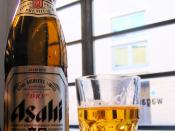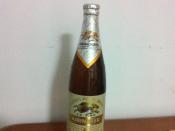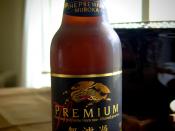Japanese beer market is the world's fourth largest market after the US, Germany and China. Beer is considered to be a king in Japan accounting for over 70 % of all alcohol sold; while, contrary to common western belief, traditional sake is only second most consumed alcoholic drink in Japan with 14% market share. Despite being one of the largest markets in the world, development of the market has been rather unpredictable. Until 2001, the beer market has been shrinking mainly due to changing tastes, healthier lifestyles and declining population of beer drinkers. On the positive side is the fact that for the first time in the last five years there has been 1.1% increase in consumption.
For many years, Japanese beer market has been dominated by four main breweries - Kirin, Sapporo, Asahi and Santory - that were competing more over the packaging rather than product. Early attempts to differentiate the product by introducing new unusual tastes have failed; and "packaging wars" did not make any significant changes in the relative positions of competitors.
In 1980s, Kirin Beer had the biggest share of the Japanese beer market. Leading position was achieved through implementation of a successful market strategy emphasizing distribution, production and brand as three competitive factors. At that time, market dominance of Kirin was so strong that the company could even set market prices on all domestic beer sold in the Japanese market. Kirinôs highly favorable cost position allowed to produce beer at a rather low costs and still enjoy strong profitably; while other breweries could hardly cover their production costs.
While being the market leader and believing that "real beer taste" produced by Kirin was exactly the taste that consumers wanted, the company was somewhat slow to identify that preferences of new Japan's beer drinkers have shifted...


